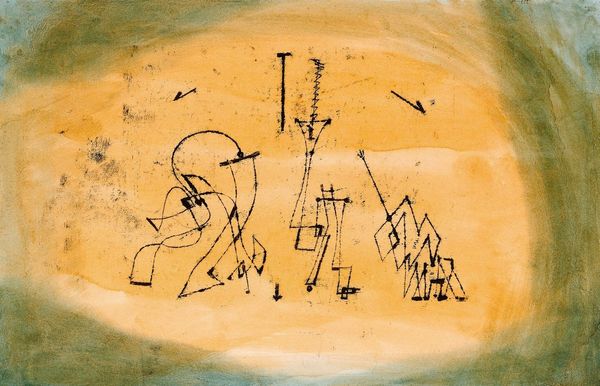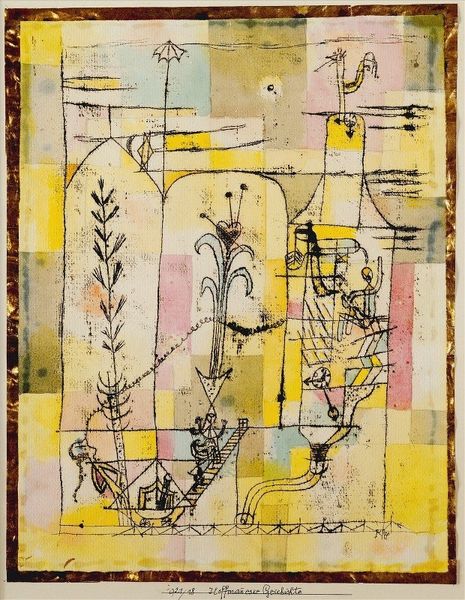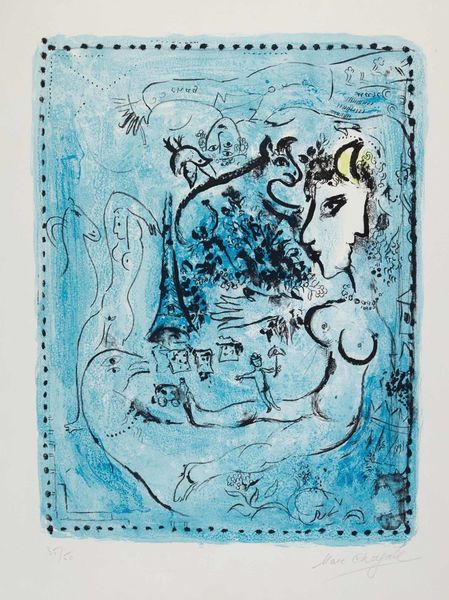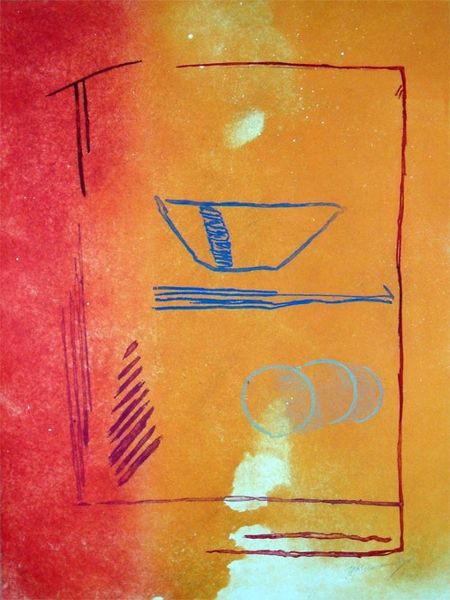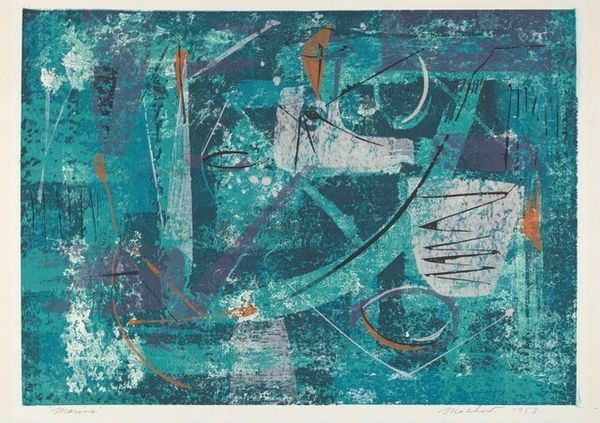
Dimensions: 63.8 x 48.1 cm
Copyright: Public domain
Curator: Ah, here we have Paul Klee’s "Twittering Machine" created in 1922. It's a mixed-media piece featuring ink and watercolors on paper, currently residing here at MoMA. Editor: My first thought? It’s unsettling. These spindly creatures, perched on what looks like a torture device. There’s a distinct sense of anxiety, despite the whimsical title. Curator: Indeed. Klee's work is rife with psychological tension, often expressed through deceptively simple forms. Birds, throughout history, have been powerful symbols linked to prophecy and both good and ill omens. Here, their exaggerated, almost skeletal appearance transforms that symbolism. Editor: Exactly! It evokes a Brechtian sense of unease. The “machine” element—that crank—suggests a forced performance, a twisted form of entertainment. Is Klee commenting on the dehumanizing aspects of industrialization? The war? Curator: That’s a compelling reading. The war's devastation deeply affected many artists. Klee, through his particular blend of abstraction and figuration, certainly grapples with those traumas, even embedding within his work, influences drawn from a child's imaginative mind. The "twittering" itself, which suggests the natural world, seems corrupted, mechanized. Editor: And it’s hard to ignore the racial elements here. Consider how caricature has been historically deployed. Those wide, staring eyes… they echo derogatory representations that have perpetuated racist violence across centuries. Klee was, after all, working within a complex sociopolitical context. Curator: It’s an important point. Klee's position in German Expressionism complicates interpretations. While the movement championed emotional honesty and challenged societal norms, it wasn't immune to the prejudices of the time. But even if unintended, the image has now entered our consciousness in ways that reflect broader historical inequities. Editor: Absolutely. Art doesn’t exist in a vacuum. Examining it through an intersectional lens allows us to unpack those uncomfortable truths, prompting vital conversations about its lasting impact. Curator: This piece holds multiple meanings. What emerges through those varying perspectives, and what stays buried, remains a fascinating field of contemplation for us all. Editor: Precisely. And Klee's piece stands as a reminder of how necessary critical engagement with the art of the past really is for the struggles of the present.
Comments
No comments
Be the first to comment and join the conversation on the ultimate creative platform.
